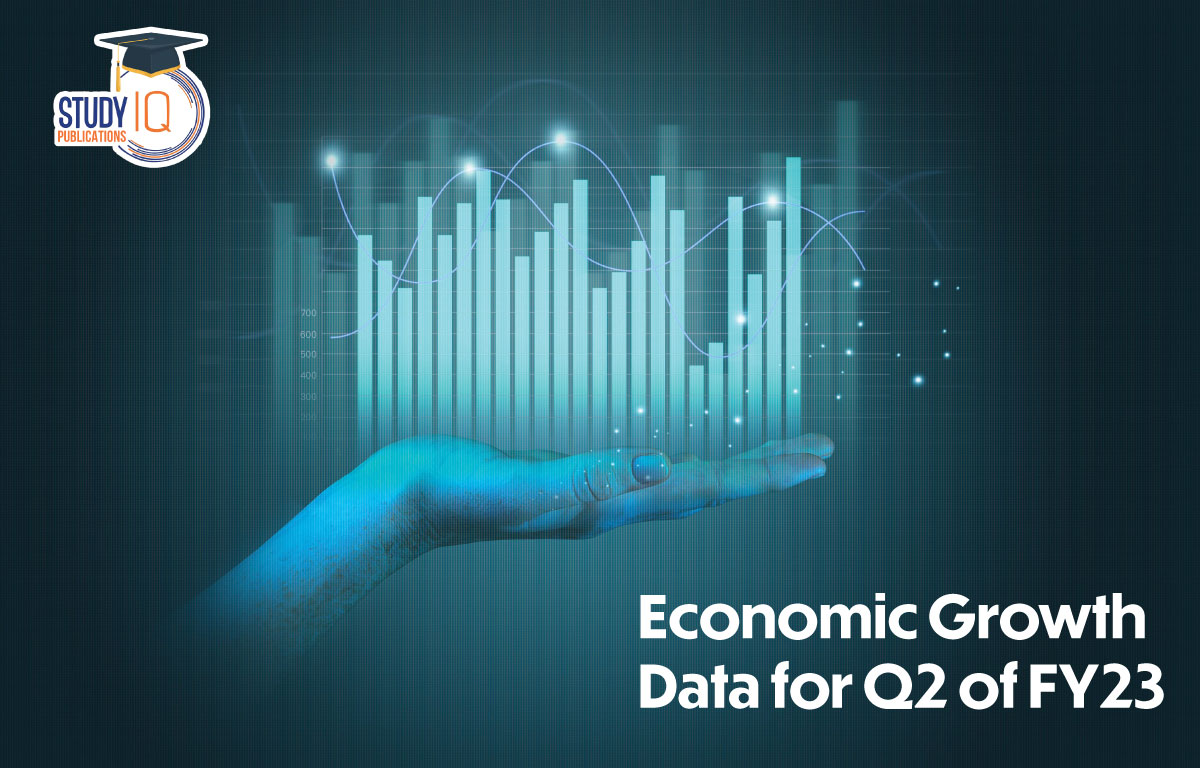Table of Contents
More on the News
- India’s gross domestic product or GDP grew by 6.3 per cent in Q2 on a year-on-year basis. This number was 6.3% more than the GDP in the same months in 2021.
- Q2 covers the months of July, August and September.
- India’s Gross Value Added (or GVA) in Q2 has grown by. 5.6 per cent on a year-on-year basis.
Gross Domestic Product (GDP)
- The GDP measures the monetary measure of all final goods and services produced in a country in a given time period.
- The GDP captures the total “demand” in the economy by adding up the total expenditures in the economy.
- Key components of GDP growth:
- Money spent for private consumption (Private Final Consumption Expenditure or PFCE)
- Government spending on its current consumption (Government Final Consumption Expenditure or GFCE)
- Money spent towards investments to boost the productive capacity of the economy (Gross Fixed Capital Expenditure)
- Net effect of exports and imports (Net Exports or NX)
Gross Value Added (GVA)
- GVA of a sector is defined as the value of output minus the value of its intermediary inputs.
- GVA calculates national income from the supply side by adding up all the value added across different sectors.
- GVA data helps us understand which sector of the economy is robust and which is struggling.
Relation between GDP and GVA
- The GDP and GVA are related by the following equation: GDP = (GVA) + (Taxes earned by the government) — (Subsidies provided by the government).
- If the taxes obtained by the government are more than the subsidies it provides, the GDP will be higher than GVA.
- For the second quarter, the GDP (at Rs 38,16,578 crore) is much more than the GVA (which is at Rs 35,05,599 crore).
- The GDP data is more useful when observing annual economic growth and comparing the economic growth of a country either with its growth in the past or with another country.
The GDP Data
- Private consumption: Private consumption contributes over 55% of India’s total GDP. This component is crucial as it incentivises businesses to make fresh investments.
- According to the data, private consumption has grown by 9.7 per cent over the past year. However, the growth is relatively modest (11 per cent) when compared over the last three years.
- Investment expenditure: Expenditures towards investments are the second biggest contributor to the GDP, accounting for around 33 per cent of the total GDP.
- The investment expenditures have witnessed a growth by 10.4% over FY21 and by almost 21% between FY20 and FY23.
- This is the best performance over any three-year period going back to FY14. This suggests brighter prospects for the economy over the medium term.
- Government Final Consumption Expenditure: There was a contraction witnessed in government final consumption expenditures.
- It usually accounts for about 10-11% of the GDP, which gives the ability to boost an economy during tough times when people and businesses hold back spending.
- Q2 data shows that government consumption expenditure contracted by 4.4% per cent in Q2 (over the Q2 of 2021). It is also about 20% below the pre-Covid level.
- Net Exports data: Since India imports more than it exports, the NX value is negative. According to Q2 data, this negative value swelled by 89 per cent.
- The drag of negative exports on GDP has also increased in size by almost 150 per cent.
The GVA Data
- Overall performance: GVA has shown a growth of 5.6 per cent year on year. However, the growth is just 7.6 per cent when compared to the pre-Covid level set in FY20.
- Previous performance: GVA grew by just 10.6% between FY17 and FY20 and between FY14 and FY17, manufacturing GVA grew by 31.3%.
- Indian manufacturing has not been able to add value for the past six years, resulting in loss of jobs by half between 2016 and 2020.
- Contraction in manufacturing sector: GVA data has shown contraction in manufacturing sector. The manufacturing GVA for Q2 declined by 4.3%.
- Manufacturing is important as it has a huge potential for job creation and can soak up excess labour from the agriculture sector.
- The contracton shows that manufacturing GVA has grown by just 6.3 per cent over the three years since the Covid pandemic.
- Growth in services: Q2 GVA data shows 15 per cent growth in services such as trade and hotels, etc. This secor is a huge job creator.
- Comparing it with the pre-Covid level (Q2 of FY20), the growth is barely over 2 per cent. Services sector grew by over 26 per cent in the three years between FY17 and FY20.
- This shows the effect of covid pandemic on this vital sector.
- Contraction in mining and quarrying: Mining and quarrying sector has contracted by almost 3%. The sector has contracted by 3.5% between FY17 and FY20 and grown by just 2.5% since then.
- Growth in agriculture sector: GVA of agriculture (along with forestry and fishing) has grown at 4.6%. This occurred despite sowing of crops did not happen on time.


 Daily Quiz 16 July 2025
Daily Quiz 16 July 2025
 US Approach to the Trade Deal with India...
US Approach to the Trade Deal with India...





















